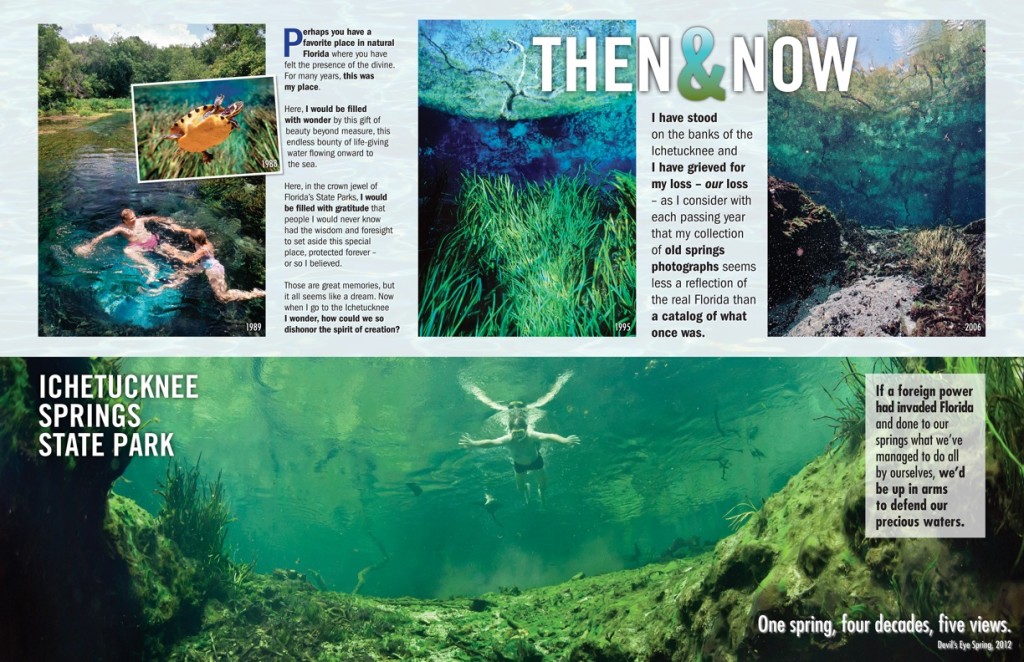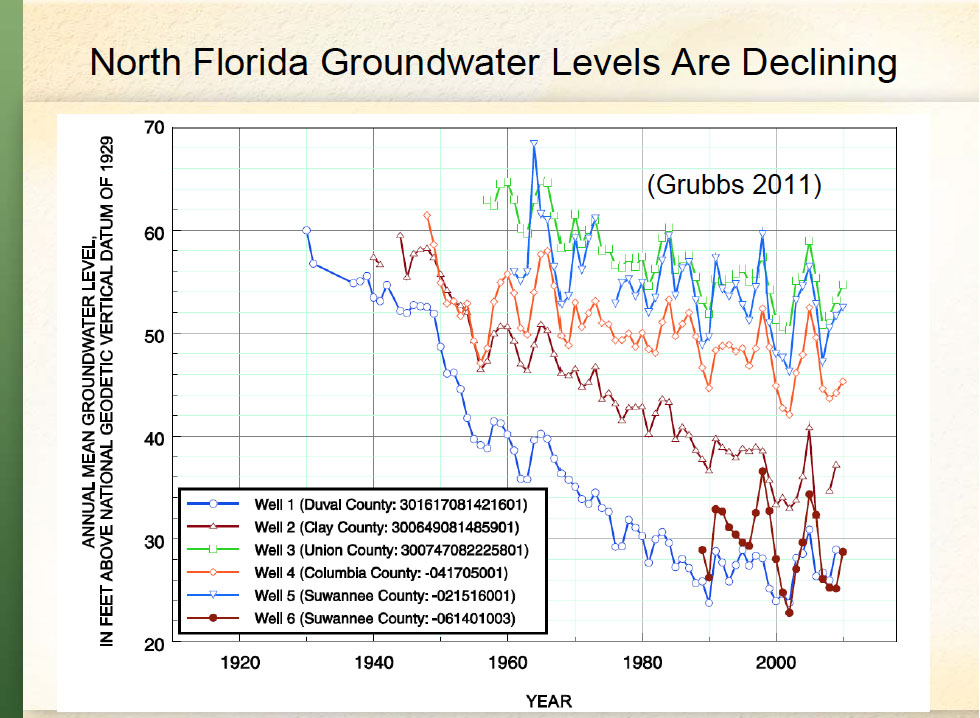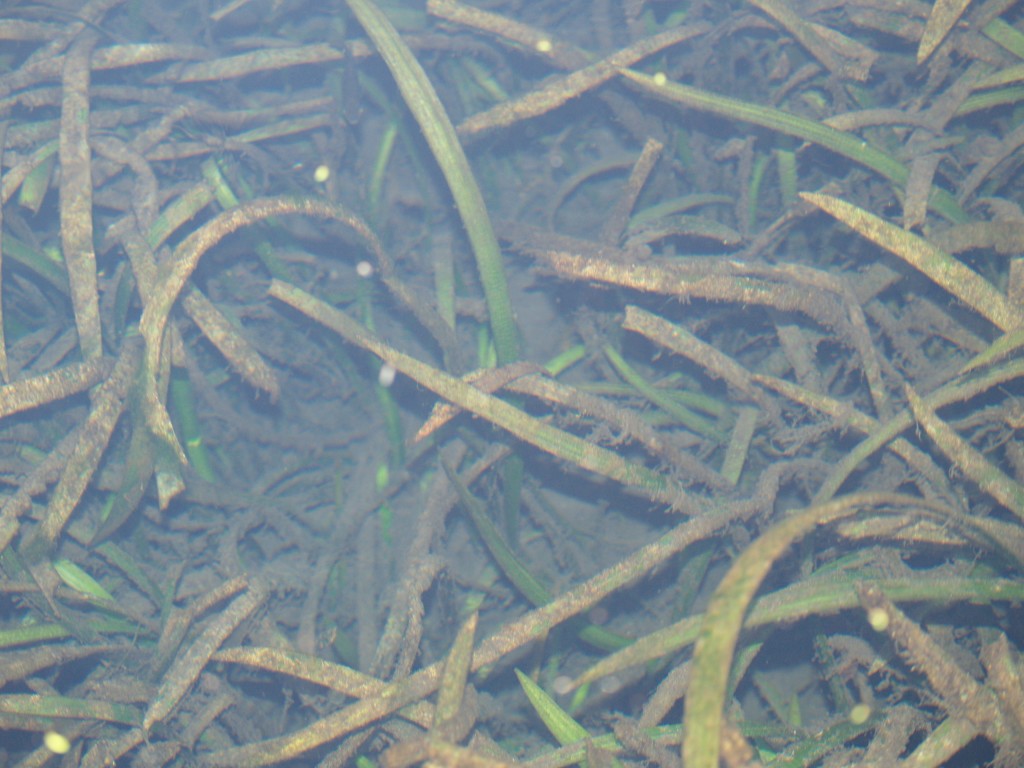
Historical flow records over the last 90 years have shown a decline in flow for the Ichetucknee river and springs of roughly 10-20%. Additionally, nitrate-nitrogen concentrations have increased from less thatn 0.23 mg/L in 1946 to an average of 0.80 mg/L over the past two decades.
Flow and Groundwater Decline
Spring flows began declining in the 1970s, due in part to massive water use in Northeast Florida that has siphoned underground water away from the Ichetucknee springshed. Long-term trends show that groundwater levels in North Florida are declining, which is troubling because groundwater in the Floridan aquifer is the source of drinking water for millions of people in Florida.
North Florida Groundwater Level Decline in Selected Wells
Nitrate Increase
Declining flows allow for higher concentrations of pollutants such as nitrates that damage the underwater plant community and can be toxic to people and animals. The United States Geological Survey estimates that every year, 1430 tons of nitrogen leach into the Floridan Aquifer underlying the Ichetucknee springshed. In descending order, the primary sources of this pollution are inorganic fertilizers on crops, lawns and pine plantations; animal waste; septic tanks; atmospheric deposition ; and land application of treated wastewater and biosolids.

Recreational Impacts
Another problem that has affected the Ichetucknee is the impact of thousands of people who visit the springs and river every year. Tubing, in particular, has damaged the submerged aquatic vegetation (SAV) on the northern part of the Ichetucknee River, and that SAV is essential for a healthy ecosystem.
Could people be loving the Ichetucknee to death?
The Florida Park Service has recently taken steps to solve this problem by shifting tubing away from the more sensitive north end of the river to the deeper part of the river. For more information, see:
https://belovedblueriver.org/the-human-role/recreational-impacts/
https://www.floridastateparks.org/parks-and-trails/ichetucknee-springs-state-park/tubing-informatio
